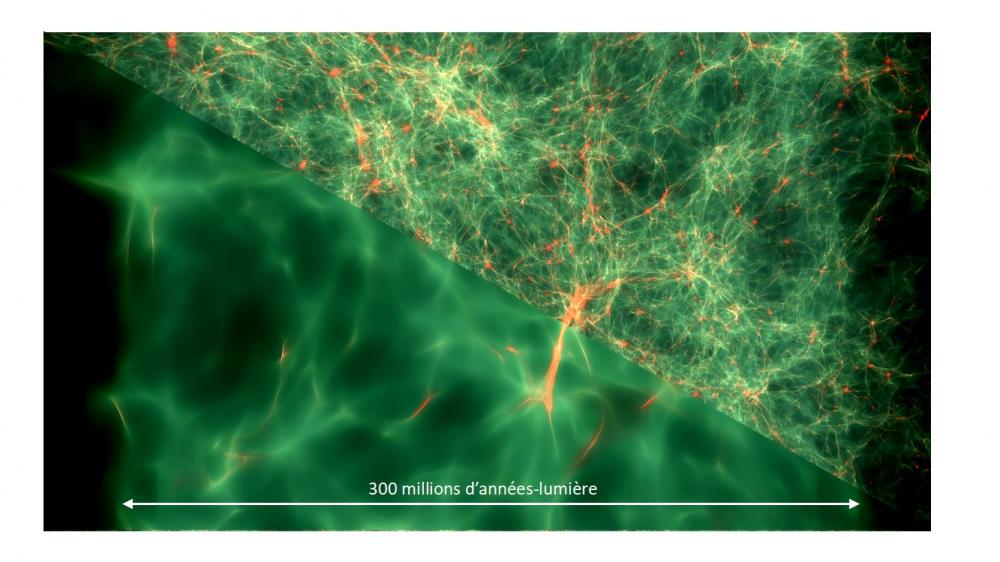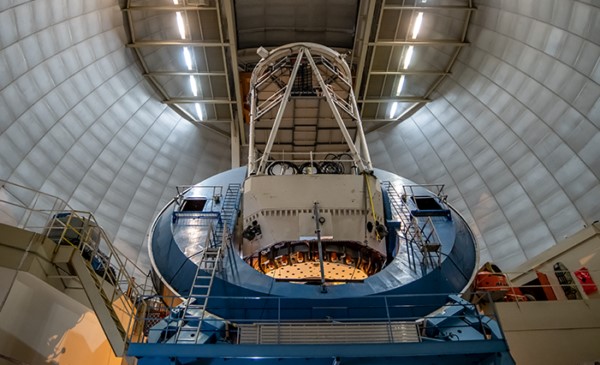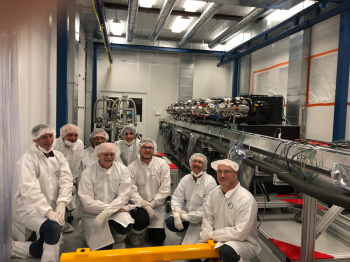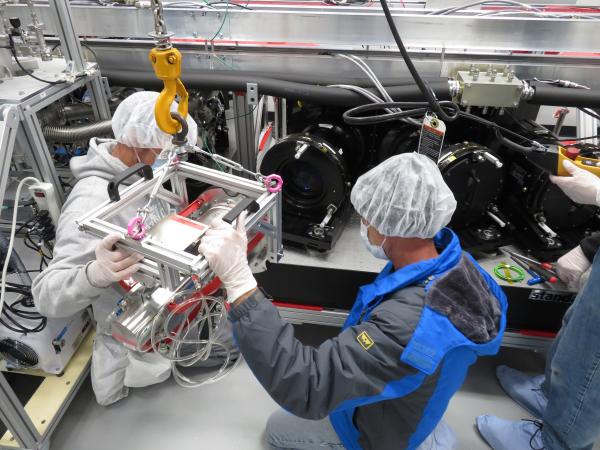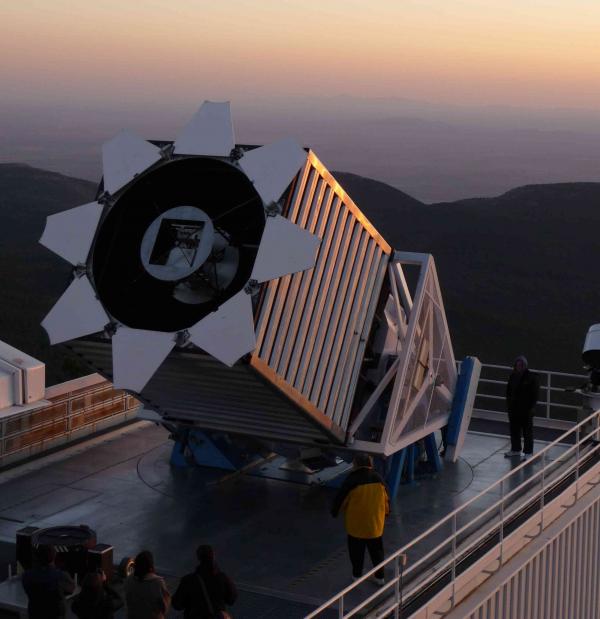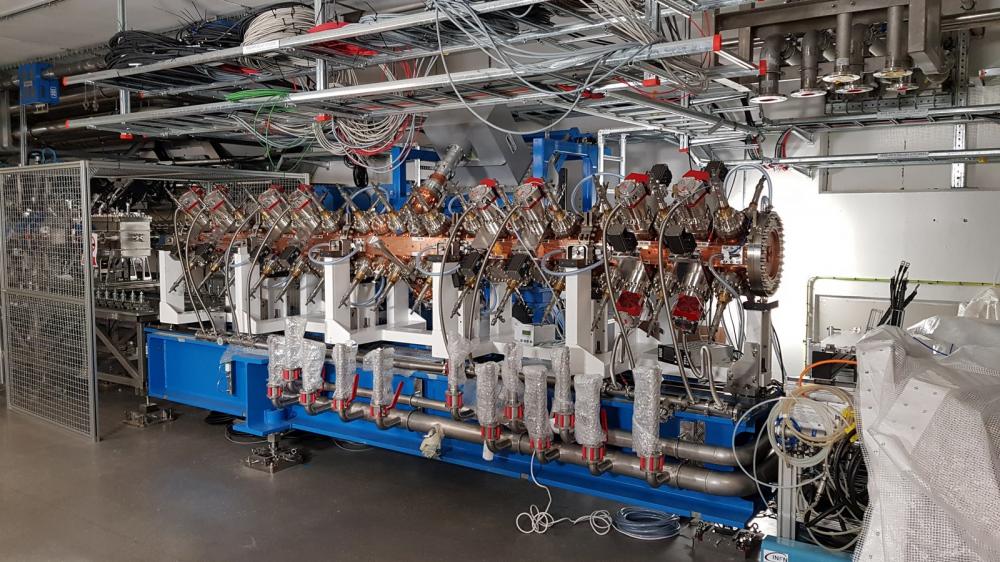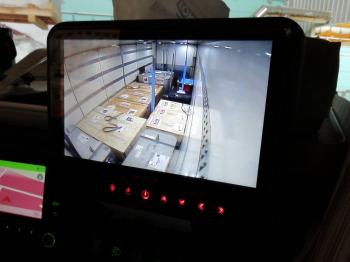A team from IRFU's Department of Particle Physics (DPhP) has just conducted the most accurate study to date of the mass of cosmic neutrinos, including both standard model neutrinos and sterile neutrinos contributing to dark matter.
The researchers used the spectra of nearly 200,000 distant quasars measured by the Sloan Digital Sky Survey (SDSS) eBOSS project to map the distribution of hydrogen at very remote times in the history of our universe, ten to twelve billion years ago.
Neutrinos, propagating at relativistic speeds for billions of years, prevent gravity from acting on small scales and smooth the structures (clusters of galaxies, filaments, ...) revealed by the spectra of quasars. Thanks to the accuracy of the measurements, researchers have been able to narrow the possible range for the mass of cosmic neutrinos, to the point of being able to have their word on how the different masses of the three neutrinos of the Standard Model are ordered.
‘First light’ for the Dark Energy Spectroscopic Instrument (DESI): as the installation phase nears completion, this new instrument is due to undergo final tests before starting to create a giant map of the sky in early 2020, a mission that is scheduled to run for five years. CEA, the French National Centre for Scientific Research (CNRS), Aix-Marseille University and French company Winlight System have played a significant role in the project to develop this international instrument which aims to scan the sky in an attempt to understand the effects of dark energy.
The installation of DESI, the Dark Energy Spectroscopic Instrument at the Kitt Peak Observatory in Arizona, has just passed an important milestone: with 6 operational spectrographs on site, the minimum configuration required to meet the scientific objectives of the project has been reached. At the end, DESI will have 10 spectrographs and will commit itself from 2020 to the spectroscopic survey of 35 million galaxies and quasars, to study the dark component of the Universe. Irfu, responsible for the cryogenic part of the spectrographs, has made a major contribution to the success of this installation and is currently finalizing the qualification of the cameras of the last spectrograph in Saclay. In parallel, other essential milestones for the construction of the instrument are achieved.
The Dark Energy Spectroscopic Instrument (DESI) is intended to make the spectroscopic survey of 35 million galaxies and quasars from 2020 onwards, to study precisely the properties of dark energy. Its installation, started in 2018, has recently entered a new phase with the reception and assembly of the first two spectrographs out of the 10 that the instrument will include. Irfu, partner of the project since the beginning and responsible for the cryogenic part of the spectrographs, has successfully completed this installation. The next 8 spectrographs will be installed next May and September under the coordination of the Irfu team, in partnership with the local teams.
vidéo réalisée par Victor Silva (Irfu/DIS)
Neutrinos from the Big Bang have been traveling the Universe for more than 13 billion years. They are almost undetectable but their footprint on the formation of large structures in the Universe, such as galaxies, can be detected. For the first time, this trace of the "diffuse neutrino background" from the Big Bang on the "baryonic acoustic oscillations" (BAO) has been deduced from the survey of 1.2 million galaxies of the "Sloan Digital Sky Survey" (SDSS). These data correspond to 5 years of observations from the Baryon Oscillation Spectroscopic Survey (BOSS) experiment, a ground-based telescope installed in New Mexico. The result, published in the journal Nature Physics, shows how the BAO phase can constrain the number of neutrino species in the Standard Model of Particle Physics.
The DPhP group has been involved in this project for more than 10 years and is currently working on its extension, the eBOSS project. In the very near future, the DESI project will be able to study even more precisely this cosmic neutrino background produced by the Big Bang.
Pairing is ubiquitous in physics. From superconductivity to quantum shell structure, coupling particles into pairs is one of nature's preferred ways to lower the energy of a system. New results obtained at the Radioactive Isotope Beam Factory (RIBF, Japan) with the MINOS device, which was conceived and constructed at Irfu, show for the first time that pairing also plays an important role in single-proton removal reactions from neutron-rich nuclei. These results show that proton-removal cross sections can be used as a tool to investigate pairing correlations for very neutron rich nuclei not accessible via spectroscopy. Indeed, the latter are produced in too small quantities to consider spectroscopy, studying the gammas emitted during de-excitation for example. This study was recently published in Physical Review Letters [1].
An international collaboration led by the institutes of CEA-IRFU and of RIKEN (Japan) demonstrates, for the first time, the exceptional stability of the very-neutron rich nickel-78 nucleus and its doubly-magic character. The experiment at RIKEN was made possible by the unique combination of the MINOS device developed at CEA-Irfu and the very exotic beams produced by the RIBF facility of the Japanese accelerator.These results are published in Nature [Nat19].
On December 4, 2019, mechanical reception of the RFQ provided by Irfu took place in the tunnel of the European Spallation Source (ESS) project in Lund, Sweden. Following the delivery of the RFQ on August 27, 2019, the installation immediately followed with the Irfu team present and guaranteeing its success over the following months.
August 27, 2019, a key accelerator component from France was delivered to the European Spallation Source (ESS) in Lund, Sweden, as part of the French in-kind contributions to the next-generation research infrastructure. The Radio Frequency Quadrupole (RFQ) is the first accelerating structure in ESS’ linear accelerator and has been designed, developed and manufactured by the ESS French stakeholder CEA in its institute Irfu (Institute of Research into the Fundamental Laws of the Universe).

